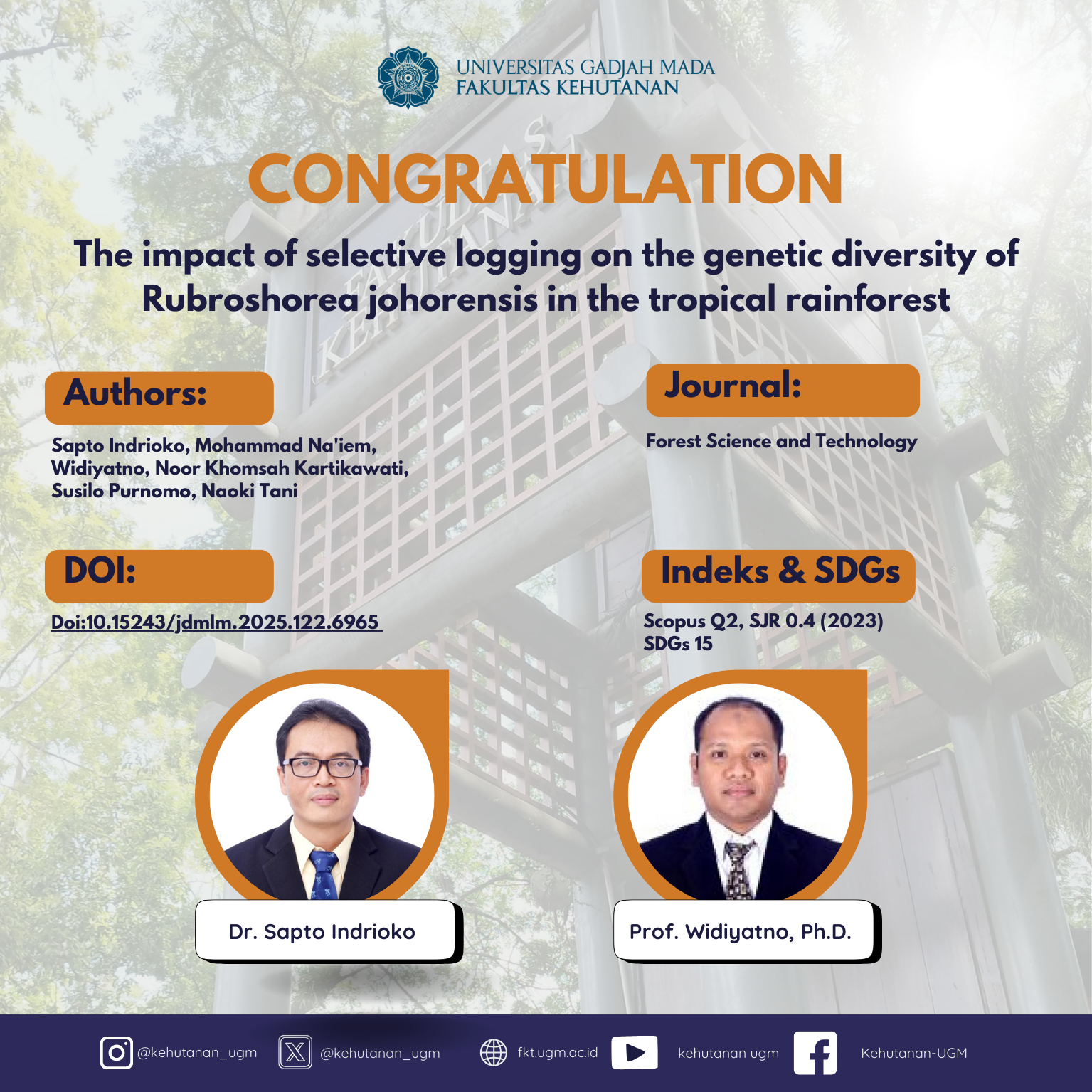
Abstract
The tropical rainforest of Kalimantan, Indonesia, is dominated by a mixed dipterocarp forest. Rubroshorea johorensis is a commercial species of the Dipterocarpaceae family but is listed as vulnerable. So far, the management of natural forests through selective logging may have a negative impact on genetic diversity. Therefore, this study was conducted to determine the genetic diversity of R. johorensis in different forest types representing the management and silvicultural techniques in the tropical rainforest of Kalimantan, including virgin forest (V1-V4 populations), logged over area/LOA (L1-L3 populations), and stand established by enrichment planting after selective logging (E1-E3 populations). The study applied both expressed sequence tags microsatellite (EST-SSR) loci and genomic microsatellite loci. The AMOVA showed that genetic differences among forest types were minimal (2.48%), with most of the variation occurring within individuals (78.51%). All genetic diversity variables of R. johorensis were not significantly different among forest types, although with respect to all genetic variables, enrichment planting was the highest, and LOA was the lowest. The research suggested that selective logging slightly reduced the genetic diversity of R. johorensis, and the enrichment planting using intensive silvicultural technique could increase all genetic variables and the potential of residual stand. In addition, the established R. johorensis progeny trial using selected mother trees from the surrounding concession area is useful for improving the genetic quality and conserving genetic resources in the future. The success of massive rehabilitation in the LOA will promote the standing stock and maintain the forest genetic resources. Furthermore, the consistent involvement of forest concessionaires and government support is crucial for the sustainable management of R. johorensis in its natural habitat.
SDGs:
SDG 15:Life on Land
Link Dokumen:
Download
